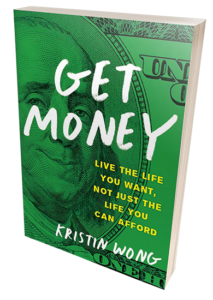 People fear investing because they think it’s like playing the lottery. It’s risky. It’s dangerous. A better solution is just stuffing cash under your mattress, perhaps. Or letting it sit in a savings account where it earns less than the rate of inflation.
People fear investing because they think it’s like playing the lottery. It’s risky. It’s dangerous. A better solution is just stuffing cash under your mattress, perhaps. Or letting it sit in a savings account where it earns less than the rate of inflation.
It’s true, investing does come with some risk. But failing to invest because you believe the myths about investing is possibly riskier, because your money fails to grow. It fails to keep up with inflation.
I’m not talking about day trading, which, yes, is much more like playing the lottery. I’m not talking about the hijinks you might’ve seen in The Wolf of Wall Street, which is, you know, a movie. I’m talking about investing for regular folks–putting money in the market, as a whole, where it’s diversified and has proven itself over time. It’s not as exciting as Leonardo DiCaprio throwing money off a yacht, but it’ll fund your retirement. And you don’t need a whole hell of a lot to get started, either.
Unless you do win the lottery, you probably need to invest, either in your company’s 401(k) or on your own. Or, better yet, both! It used to be a topic that was intimidating for me to write about, but I’ve gotten pretty comfortable with it. And it’s not because I’m some investing genius, it’s because it’s really not that difficult. I know this is a blog about frugality, but what’s the point of saving your money if you’re not going to make it work for you?
I co-wrote a beginner’s guide to investing with my editor at Lifehacker. It’s detailed, but it breaks down each simple step to make the whole topic digestible. It boils down to:
• Figure out your asset allocation
• Pick some index funds, buy them (some require as little as $50 to buy.)
• Rebalance occasionally
Check out the full article below, along with some other basic articles I’ve written about investing money. I hope you’ll bookmark, read and learn.
How to Build an Easy, Beginner “Set and Forget” Portfolio
It’s important to just start saving, but it’s also important to make sure your investments are diversified. You don’t want to be invested in any one asset class–stocks, bonds or alternatives. You want to spread things out. Otherwise, you’re putting all of your eggs in one basket and that’s what’s risky. If you only invest in real estate for example, your savings are at the mercy of one market.
I was intimidated by investing, but here’s how I got started
My personal story of how I got over my fear of investing, and how it’s paid off.
PSA: Investing Your Money Is Not Like Playing the Lottery
My thoughts on this can be summed up with my last comment:
With investing, the intention is for the money to be put to use. You might invest in a handful of companies; you might invest in real estate; you might invest in some peer peer-to-peer lending program. Either way, your money is being utilized.
With gambling, the intention is not to utilize the money but to profit from someone’s loss. In order to make money from gambling, someone else’s contributing bet has to fail, right? The intention of the contribution isn’t to grow anything but to pool money to be paid to a winner.
On the other hand, when the market fails, no one wins. When it does well, personal investors do well. Investing is not dependent on loss; it’s dependent on growth.
Just because there’s some level of risk involved with both doesn’t mean they’re the same thing. And just because you may be able to predict trends in both doesn’t mean they’re the same thing.
Photo OTA Photos.
 Managing your money is like going to the dentist or standing in line at the DMV. Nobody wants to do it, but at some point, it’s inevitable: you need to clean your teeth, renew your license, and manage your money like a grown-up.
Managing your money is like going to the dentist or standing in line at the DMV. Nobody wants to do it, but at some point, it’s inevitable: you need to clean your teeth, renew your license, and manage your money like a grown-up.
Good article. Over the years, the word “investing” has been associated with “stocks” or “risky”. However, that’s not always the case. Investing is simply identifying one’s risk tolerance and make your money work according. If you are super conservative, then there’s nothing wrong by investing in a regular bank FDIC-insured CD even though it doesn’t keep up with the inflation. At least it beats putting money under the mattress. Investing does become less intimidating after some basic education.
That’s true, it is better than nothing, I suppose!
Mutual funds are actively managed, while index funds aren’t. An actively managed mutual fund has a fund manager who, using his knowledge of the market, selects stocks and tries to time his buying and selling in order to get the best return and beat the market.